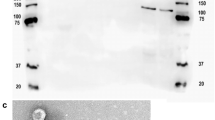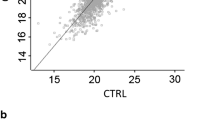Abstract
U373MG cells are able to take up aminochrome that induces glutathione transferase M2-2 (GSTM2) expression in a concentration-dependent manner where 100 µM aminochrome increases GSTM2 expression by 2.1-fold (P < 0.001) at 3 h. The uptake of 3H-aminochrome into U373MG cells was significantly reduced in the presence of 2 µM nomifensine (P < 0.001) 100 µM imipramine (P < 0.001) and 50 mM dopamine (P < 0.001). Interestingly, U373MG cells excrete GSTM2 into the conditioned medium and the excretion was significantly increased (2.7-fold; P < 0.001) when the cells were pretreated with 50 µM aminochrome for 3 h. The U373MG-conditioned medium containing GSTM2 protects SH-SY5Y cells incubated with 10 µM aminochrome. The significant protection provided by U373MG-conditioned medium in SH-SY5Y cells incubated with aminochrome was dependent on GSTM2 internalization into SH-SY5Y cells as evidenced by (i) uptake of 14C-GSTM2 released from U373MG cells into SH-SY5Y cells, a process inhibited by anti-GSTM2 antiserum; (ii) lack of protection of U373MG-conditioned medium in the presence of anti-GSTM2 antiserum on SH-SY5Y cells treated with aminochrome; and (iii) lack of protection of conditioned medium from U373MGsiGST6 that expresses an siRNA directed against GSTM2 on SH-SY5Y cells treated with aminochrome. In conclusion, our results demonstrated that U373MG cells protect SH-SY5Y cells against aminochrome neurotoxicity by releasing GSTM2 into the conditioned medium and subsequent internalization of GSTM2 into SH-SY5Y cells. These results suggest a new mechanism of protection of dopaminergic neurons mediated by astrocytes by releasing GSTM2 into the intersynaptic space and subsequent internalization into dopaminergic neuron in order to protect these cells against aminochrome neurotoxicity.







Similar content being viewed by others
References
Aguirre P, Urrutia P, Tapia V, Villa M, Paris I, Segura-Aguilar J, Núñez MT (2012) The dopamine metabolite aminochrome inhibits mitochondrial complex I and modifies the expression of iron transporters DMT1 and FPN1. Biometals 25:795–803
Arriagada C, Paris I, Sanchez de las Matas MJ, Martinez-Alvarado P, Cardenas S, Castaneda P, Graumann R, Perez-Pastene C, Olea-Azar C, Couve E, Herrero MT, Caviedes P, Segura-Aguilar J (2004) On the neurotoxicity of leukoaminochrome o-semiquinone radical derived of dopamine oxidation: mitochondria damage necrosis and hydroxyl radical formation. Neurobiol Dis 16:468–477
Baez S, Segura-Aguilar J, Widersten M, Johansson AS, Mannervik B (1997) Glutathione transferases catalyse the detoxication of oxidized metabolites (o-quinones) of catecholamines and may serve as an antioxidant system preventing degenerative cellular processes. Biochem J 324:25–28
Banerjee R, Vitvitsky V, Garg SK (2008) The undertow of sulphur metabolism on glutamatergic neurotransmission. Trends Biochem Sci 33:413–419
Bisaglia M, Mammi S, Bubacco L (2007) Kinetic and structural analysis of the early oxidation products of dopamine: analysis of the interactions with alpha-synuclein. J Biol Chem 282:15597–15605
Blackinton J, Lakshminarasimhan M, Thomas KJ, Ahmad R, Greggio E, Raza AS, Cookson MR, Wilson MA (2009) Formation of a stabilized cysteine sulfinic acid is critical for the mitochondrial function of the parkinsonism protein DJ-1. J Biol Chem 284:6476–6485
Braak H, Ghebremedhin E, Rüb U, Bratzke H, Del Tredici K (2004) Stages in the development of Parkinson’s disease-related pathology. Cell Tissue Res 318:121–134
Canet-Avilés RM, Wilson MA, Miller DW, Ahmad R, McLendon C, Bandyopadhyay S, Baptista MJ, Ringe D, Petsko GA, Cookson MR (2004) The Parkinson’s disease protein DJ-1 is neuroprotective due to cysteine-sulfinic acid-driven mitochondrial localization. Proc Natl Acad Sci USA 101:9103–9108
Carstam R, Brinck C, Hindemith-Augustsson A, Rorsman H, Rosengren E (1991) The neuromelanin of the human substantia nigra. Biochim Biophys Acta 1097:152–160
Cheng FC, Kuo JS, Chia LG, Dryhurst G (1996) Elevated 5-S-cysteinyldopamine/homovanillic acid ratio and reduced homovanillic acid in cerebrospinal fluid: possible markers for and potential insights into the pathoetiology of Parkinson’s disease. J Neural Transm 103:433–446
Conway KA, Rochet JC, Bieganski RM, Lansbury PT Jr (2001) Kinetic stabilization of the α-synuclein protofibril by a dopamine-a α-synuclein adduct. Science 294:1346–1349
Dagnino-Subiabre A, Cassels BK, Baez S, Johansson AS, Mannervik B, Segura-Aguilar J (2000) Glutathione transferase M2-2 catalyzes conjugation of dopamine and dopa o-quinones. Biochem Biophys Res Commun 274:32–36
Dibenedetto D, Rossetti G, Caliandro R, Carloni P (2013) A molecular dynamics simulation-based interpretation of nuclear magnetic resonance multidimensional heteronuclear spectra of α-synuclein·dopamine adducts. Biochemistry 52:6672–6683
Dringen R, Hirrlinger J (2003) Glutathione pathways in the brain. Biol Chem 384:505–516
Ericson C, Georgievska B, Lundberg C (2005) Ex vivo gene delivery of GDNF using primary astrocytes transduced with a lentiviral vector provides neuroprotection in a rat model of Parkinson’s disease. Eur J Neurosci 22:2755–2764
Gardaneh M, Gholami M, Maghsoudi N (2011) Synergy between glutathione peroxidase-1 and astrocyes growth factors protects dopaminergic neurons against 6-hydroxydopamine. Rejuvenation Res 14:195–204
Huenchuguala S, Muñoz P, Zavala P, Villa M, Cuevas C, Ahumada U, Graumann R, Nore BF, Couve E, Mannervik B, Paris I, Segura-Aguilar J (2014) Glutathione transferase mu 2 protects glioblastoma cells against aminochrome toxicity by preventing autophagy and lysosome dysfunction. Autophagy 10:618–630
Johansson A-S, Bolton-Grob R, Mannervik B (1999) Use of silent mutations in cDNA encoding human glutathione transferase M2-2 for optimized expression in escherichia coli. Protein Expr Purif 17:105–112
Koh K, Lee K, Ahn JH, Kim S (2009) Human cytomegalovirus infection downregulates the expression of glial fibrillary acidic protein in human glioblastoma U373MG cells: identification of viral genes and protein domains involved. J Gen Virol 90:954–962
Lafon-Cazal M, Adjali O, Galéotti N, Poncet J, Jouin P, Homburger V, Bockaert J, Marin P (2003) Proteomic analysis of astrocytic secretion in the mouse. Comparison with the cerebrospinal fluid proteome, J Biol Chem 278:24438–24448
LaVoie MJ, Ostaszewski BL, Weihofen A, Schlossmacher MG, Selkoe DJ (2005) Dopamine covalently modifies and functionally inactivates parkin. Nat Med 11:1159–1161
Linert W, Herlinger E, Jameson RF, Kienzl E, Jellinger K, Youdim MB (1996) Dopamine 6-hydroxydopamine iron and dioxygen–their mutual interactions and possible implication in the development of Parkinson’s disease. Biochim Biophys Acta 1316:160–168
Lozano J, Muñoz P, Nore BF, Ledoux S, Segura-Aguilar J (2010) Stable expression of short interfering RNA for DT-diaphorase induces neurotoxicity. Chem Res Toxicol 23:1492–1496
McKenna MC (2007) The glutamate-glutamine cycle is not stoichiometric: fates of glutamate in brain. J Neurosci Res 85:3347–3358
Morris MJ, Craig SJ, Sutherland TM, Board PG, Casarotto MG (2009) Transport of glutathione transferase-fold structured proteins into living cells. Biochim Biophys Acta 1788:676–685
Muñoz P, Huenchuguala S, Paris I, Segura-Aguilar J (2012a) Dopamine oxidation and autophagy, Parkinsons Dis. doi:10.1155/2012/920953
Muñoz P, Paris I, Sanders LH, Greenamyre JT, Segura-Aguilar J (2012b) Overexpression of VMAT-2 and DT-diaphorase protects substantia nigra-derived cells against aminochrome neurotoxicity. Biochim Biophys Acta 1822:1125–1136
Nehlig A, Coles JA (2007) Cellular pathways of energy metabolism in the brain: is glucose used by neurons or astrocytes? Glia 55:1238–1250
Norris EH, Giasson BI, Hodara R, Xu S, Trojanowski JQ, Ischiropoulos H, Lee VM (2005) Reversible inhibition of alpha-synuclein fibrillization by dopaminochrome-mediated conformational alterations. J Biol Chem 280:21212–22129
Paris I, Perez-Pastene C, Cardenas S, Iturriaga-Vasquez P, Muñoz P, Couve E, Caviedes P, Segura-Aguilar J (2010) Aminochrome induces disruption of actin alpha- and beta-tubulin cytoskeleton networks in substantia-nigra-derived cell line. Neurotox Res 18:82–92
Paris I, Muñoz P, Huenchuguala S, Couve E, Sanders LH, Greenamyre JT, Caviedes P, Segura-Aguilar J (2011) Autophagy protects against aminochrome-induced cell death in substantia nigra-derived cell line. Toxicol Sci 121:376–388
Pellerin L (2008) Brain energetics (thought needs food). Curr Opin Clin Nutr Metab Care 11:701–705
Pellerin L, Bouzier-Sore AK, Aubert A, Serres S, Merle M, Costalat R, Magistretti PJ (2007) Activity-dependent regulation of energy metabolism by astrocytes: an update. Glia 55:1251–1262
Rosengren E, Linder-Eliasson E, Carlsson A (1985) Detection of 5-S-cysteinyldopamine in human brain. J Neural Transm 63:247–253
Safi R, Gardaneh M, Panahi Y, Maghsoudi N, Zaefizadeh M, Gharib E (2012) Optimized quantities of GDNF overexpressed by engineered astrocytes are critical for protection of neuroblastoma cells against 6-OHDA toxicity. J Mol Neurosci 46:654–665
Schousboe A, Bak LK, Sickmann HM, Sonnewald U, Waagepetersen HS (2007) Energy substrates to support glutamatergic and GABAergic synaptic function: role of glycogen glucose and lactate. Neurotox Res 12:263–268
Segura-Aguilar J, Lind C (1989) On the mechanism of the Mn3(+)-induced neurotoxicity of dopamine:prevention of quinone-derived oxygen toxicity by DT diaphorase and superoxide dismutase. Chem Biol Interact 72:309–324
Segura-Aguilar J, Baez S, Widersten M, Welch CJ, Mannervik B (1997) Human class Mu glutathione transferases in particular isoenzyme M2-2 catalyze detoxication of the dopamine metabolite aminochrome. J Biol Chem 272:5727–5731
Segura-Aguilar J, Metodiewa D, Welch CJ (1998) Metabolic activation of dopamine o-quinones to o-semiquinones by NADPH cytochrome P450 reductase may play an important role in oxidative stress and apoptotic effects. Biochim Biophys Acta 1381:1–6
Segura-Aguilar J, Paris I, Muñoz P, Ferrari E, Zecca L, Zucca FA (2014) Protective and toxic roles of dopamine in Parkinson’s disease. J Neurochem 129:898–915
Shen XM, Xia B, Wrona MZ, Dryhurst G (1996) Synthesis redox properties in vivo formation and neurobehavioral effects of N-acetylcysteinyl conjugates of dopamine possible metabolites of relevance to Parkinson’s disease. Chem Res Toxicol 9:1117–1126
Skindersoe ME, Rohde M, Kjaerulff S (2012) A novel and rapid apoptosis assay based on thiol redox status. Cytometry 81A:430–436
Strolin-Benedetti M, Dostert P, Tipton KF (1992) Developmental aspects of the monoamine-degrading enzyme monoamine oxidase. Dev Pharmacol Ther 18:191–200
Takeda H, Inazu M, Matsumiya T (2002) Astroglial dopamine transport is mediated by norepinephrine transporter. Naunyn Schmiedebergs Arch Pharmacol 366:620–623
Trempe JF, Fon EA (2013) Structure and function of Parkin PINK1 and DJ-1 the three musketeers of neuroprotection. Front Neurol 19:438
Tse DC, McCreery RL, Adams RN (1976) Potential oxidative pathways of brain catecholamines. J Med Chem 19:37–40
Van Laar VS, Mishizen AJ, Cascio M, Hastings TG (2009) Proteomic identification of dopamine-conjugated proteins from isolated rat brain mitochondria and SH-SY5Y cells. Neurobiol Dis 34:487–500
Westlund KN, Denne RM, Rose RM, Abell CW (1988) Localization of distinct monoamine oxidase A and monoamine oxidase B cell populations in human brainstem. Neuroscience 25:439–456
Yang CZ, Zhao R, Dong Y, Chen XQ, Yu AC (2008) Astrocyte and neuron intone through glutamate. Neurochem Res 33:2480–2486
Zafar KS, Siegel D, Ross D (2006) A potential role for cyclized quinones derived from dopamine DOPA and 34-dihydroxyphenylacetic acid in proteasomal inhibition. Mol Pharmacol 70:1079–1086
Zhou ZD, Lim TM (2009) Dopamine (DA) induced irreversible proteasome inhibition via DA derived quinones. Free Radic Res 43:417–430
Acknowledgements
Supported by FONDECYT 1100165, 1061083 (JSA) 1120337 (IP) and by Grants (to B.M.) from the Swedish Research Council and the Swedish Cancer Society.
Author information
Authors and Affiliations
Corresponding author
Rights and permissions
About this article
Cite this article
Cuevas, C., Huenchuguala, S., Muñoz, P. et al. Glutathione Transferase-M2-2 Secreted from Glioblastoma Cell Protects SH-SY5Y Cells from Aminochrome Neurotoxicity. Neurotox Res 27, 217–228 (2015). https://doi.org/10.1007/s12640-014-9500-1
Received:
Revised:
Accepted:
Published:
Issue Date:
DOI: https://doi.org/10.1007/s12640-014-9500-1




